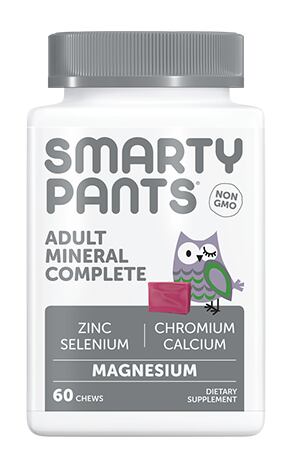Minerals come in a variety of textures, flavors, and appearances, explained Caitlin Jamison, market development manager for health and nutrition at Swiss ingredient company Jungbunzlauer.
Take for example calcium. “You’ll have some forms of calcium like calcium carbonate that are going to have a very chalky taste, and then you’ll have some forms like calcium citrate that are going to be lightly tart,” she said.
Calcium lactate gluconate is “very mild, very bland in taste,” and so is calcium phosphate, though if you use too much, “it can get a little soapy.”
So when Jungbunzlauer is helping a customer formulate a multivitamin or fortified food, Jamison said the main questions are “How is a consumer going to use this? Is it going to go with water, or what is it getting into?”
The tricky magnesium
Jamison noted that she has seen an increase of demand for magnesium fortification. This reflects SPINS data from 2016, which estimated magnesium supplement sales to overtake calcium by the end of the decade.
Incorporating magnesium into a matrix of other ingredients and nutrients, however isn’t the easiest task. It takes up space, and the more bioavailable forms cost more.
“Things like magnesium oxide and zinc oxide, they are extremely inexpensive but they’re not bioavailable,” she argued. “You can take them in, and say that a product is ‘high in magnesium,’ but your body can’t use it.”
Sebastien Merchet, nutrition business development manager for the North America subsidiary of French ingredient supplier SEPPIC, said that magnesium oxide can also lead to GI issues. “Actually you can see companies use magnesium oxide for the laxative effect. That means, obviously, that it’s not bioavailable,” he said.
While Jamison recommends citrate options because of their bioavailability, Merchet argues that brands should aim for chelated forms. A chelated magnesium SEPPIC offers is marketed under the brand name Givomag.
“[It] has no side effects and its easy to digest. It has no taste, so formulators will be able to develop formulas easier,” he said.
Bioavailability issues for brands dedicated to one delivery format?
What if a finished product manufacturer plays heavily on one delivery format as part of its brand—say, an exclusively gummy company? Does limiting which type of mineral to use mean they’re sacrificing intake over taste and palability?
“Not necessarily,” Jamison continued. “It does get into this taste versus balance versus texture, but you just have to be careful about things like the dosing and the loading,” like for example, splitting up doses in four gummies and instruct consumers to take four a day.

But opening up what delivery format a company is willing to add to its portfolio can certainly expand the possibilities of nutrients they can deliver to consumers.
Take gummy brand Smartypants, which recently forayed into a new format—chewables, for its new Adult Mineral Complete. “Minerals is a huge category but it’s not growing because we haven’t seen much innovation on the mineral side,” Nichols Gould told NutraIngredients-USA.
The company favored a chew instead of a gummy to cater to consumers looking to reduce their sugar intake. More importantly, chews are a better delivery vehicle than a gummy for minerals, which are notoriously difficult to work with in the format.
Both the kids and adult chews are formulated with eight minerals, including: Calcium (as calcium citrate), magnesium (as magnesium citrate), zinc (as zinc citrate), selenium (as sodium selenite), copper (as cupric sulfate), manganese (as manganese amino acid chelate), chromium (as chromium niacinate), and molybdenum (as molybdenum amino acid complex). The adult version also contains boron (as boron citrate).
Jamison added that minerals shouldn’t be something formulators are afraid of. “A lot of minerals tend to be pretty stable compared to vitamins,” she said. “And what we find is that you’ll always find a mineral form that is going to suit the application, whether you’re beverage, or gummy, or whatever.”
